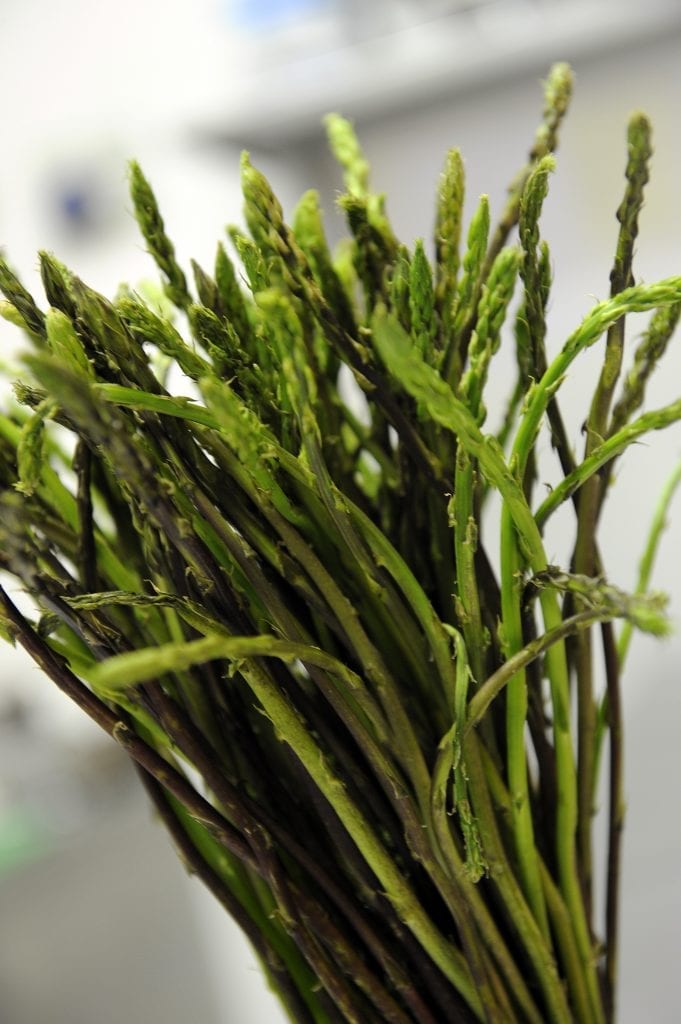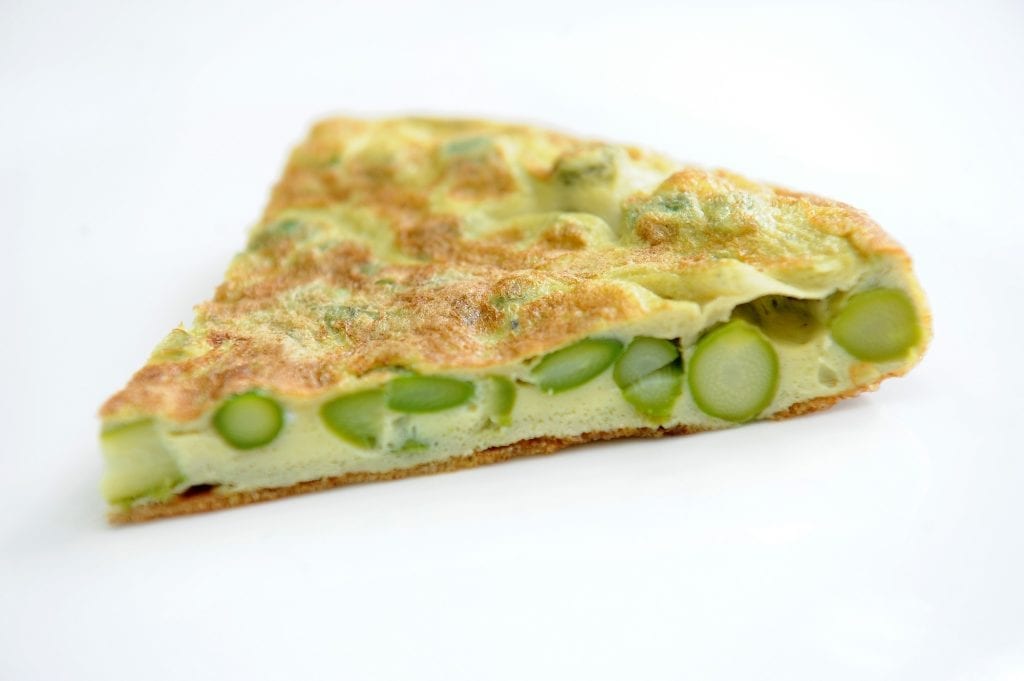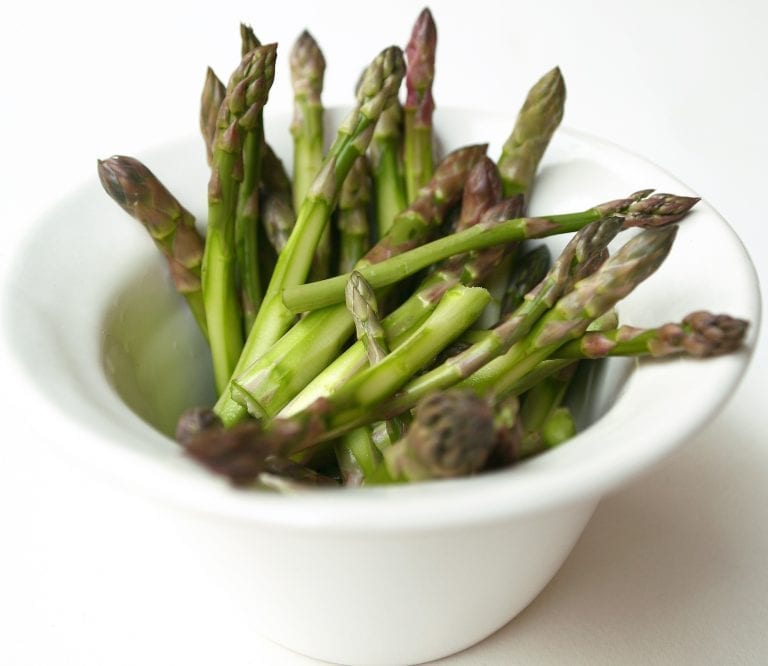Asparagus: history and curiosity
Known since ancient times, asparagus were an object of interest in Greece and even more so in ancient Rome, as evidenced by authors such as Cato and Pliny the Elder. An interest that continued into the modern age: "There is no relationship between asparagus and the immortality of the soul" is the conclusion of Achille Campanile in a book that is titled, precisely, "Asparagus and immortality of the soul”, in which the Rome native author, with his peculiar humor, also mentions some ways to enjoy them. The painter Édouard Manet, on the other hand, dedicated two works to the spears, L'asperge (The asparagus) and Une botte d'asperges (A bunch of asparagus).

Asparagus
Asparagus. Plant and production
Belonging to the liliaceae family, the same as garlic and onion (as well as lily of the valley and the lily), asparagus adapt well to different climates, for this reason they are cultivated in different regions of the world: North and South America, China and Southern Europe, mainly Italy, Spain and France. In Italy they are found practically throughout the entire peninsula, with a greater concentration in the central north: Emilia Romagna, Veneto, Tuscany, Piedmont, Lazio and Liguria boast a great production.
Famous for their diuretic properties, they are mainly composed of water, contain carbohydrates and proteins, potassium, phosphorus and vitamins A and B.
Asparagus varieties
Different types are identified on the basis of color, which depends on the variety and exposure to light: the white asparagus boasts a delicate flavour and sprouts entirely underground (due to the effect of mulching, covering the ground with various types of materials during cultivation), the violet asparagus is a white asparagus that barely sprouts above ground and in catching the light the tip becomes lilac, while the green asparagus sprouts in the air bringing to completion the process of chlorophyll photosynthesis.
Then there are wild asparagus: thin and tough, they have a more intense, almost bitter taste and are suitable for use in different preparations: as a condiment for pasta, in omelettes and soups lending their rustic and tasty flavour.
Among the best known are the white asparagus of Cimadolmo Igp, of Bassano Dop, of Cantello Igp, of Badoere Igp (white or green). Among the green asparagus we find the Mary Washington and those of Altedo Ipg, while the purple ones are those of Argenteuil, the violet Neapolitan, violet of Albenga.

Asparagus frittata
Asparagus. Purchase and conservation
Asparagus season is short: no more than a couple months, starting in April. Upon purchase they must be intact, with a firm tip, closed and well compacted, without dents or obvious damage.
They keep for a few days in the refrigerator, preferably in a vertical position and keeping the ends moist, wrapped in wet paper or in a jar with a little water.
Asparagus preparation
What is eaten of asparagus are the tips of the shoots: the stems, which have different sizes according to the varieties and are tender and fleshy as soon as they emerge from the ground, then start to become woody. They must be washed thoroughly under running water, deprived of the clear, buried, and leathery part of the stem, eliminating the harder part and the leaves with a small knife or scraping the stems.
Before cooking them, either boiled or steamed, asparagus must all be chopped to the same length and tied; the ideal pot is narrow and there are special ones on sale, filled up to leave the tips uncovered, which in this way cook by steaming. To maintain a bright color, it's useful to dip them in ice-cold water as soon as they are cooked.
Asparagus. Culinary use
The flavour often divides palates: you either love them or you hate them. For those who appreciate the flavour and the fleshy and succulent texture, they are a true delicacy to be enjoyed especially in the simplest way, boiled or steamed, with a drizzle of olive oil and lemon, or for those who prefer a richer preparation, with butter and grated Parmigiano, accompanied by vinaigrette or hollandaise sauce. They are a perfect accompaniment to meat and fish.
The big asparagus is ideally boiled while it's preferable to reserve the more slender ones for other preparations, such as risotto or velvety cream soups. Among the more traditional combinations, the one with eggs - poached or as an omelette - with egg-based sauces. They are also eaten au gratin or in rich spring salads.
Recipe by Igles Corelli
"For my recipes I prefer the Albenga asparagus variety, a prized Ligurian product, cultivated only in a small area in the province of Savona, characterized by a buttery and non-fibrous texture and one of the largest spears on the market."
If you want to use everything, it's advisable to cook the tips, the most tender and tasty part, very briefly either steamed or sautéed. The central part of the stem can be peeled and, thanks to its fleshy and dense consistency, can give life to sauces, creams and fillings. While the more fibrous end section can be dehydrated and pulverized, to prepare crispy wafers.
Crock crispy bread with asparagus tips, truffle and Parmigiano zabaione
For the crispy bread and asparagus
4 slices of Altamura sourdough bread
20 asparagus tips
butter
extra virgin olive oil
salt and pepper
For the Parmigiano zabaione
100 ml concentrated chicken stock
70 g Parmigiano Reggiano
2 egg yolks
salt
For garnish and plating
black truffle
Smear both sides of the bread slices with butter, brown them in a preheated oven at 210°C. Quickly sauté the asparagus tips in a pan with a drizzle of oil and butter, season with salt and pepper.
Prepare the zabaione cream en bain-marie (double boiler). Beat the egg yolks with the cheese in a bowl, place it on a pan with lightly boiling water. Add the hot broth in a thin stream, continuing to beat with a whisk. Continue cooking en bain-marie, stirring well for 5 minutes, then passing through a fine sieve.
Place the bread in the center of the dishes, garnish with asparagus tips, zabione cream and thinly sliced black truffle..
by Antonella De Santis


 Farewell cacio e pepe in New York. "With tariffs, Pecorino Romano will also become more expensive." The warning from Giuseppe Di Martino
Farewell cacio e pepe in New York. "With tariffs, Pecorino Romano will also become more expensive." The warning from Giuseppe Di Martino Against tariffs? Here are the US foods that could be "hit"
Against tariffs? Here are the US foods that could be "hit" US tariffs: here are the Italian wines most at risk, from Pinot Grigio to Chianti Classico
US tariffs: here are the Italian wines most at risk, from Pinot Grigio to Chianti Classico "With U.S. tariffs, buffalo mozzarella will cost almost double. We're ruined." The outburst of an Italian chef in Miami
"With U.S. tariffs, buffalo mozzarella will cost almost double. We're ruined." The outburst of an Italian chef in Miami "With US tariffs, extremely high risk for Italian wine: strike deals with buyers immediately to absorb extra costs." UIV’s proposal
"With US tariffs, extremely high risk for Italian wine: strike deals with buyers immediately to absorb extra costs." UIV’s proposal







